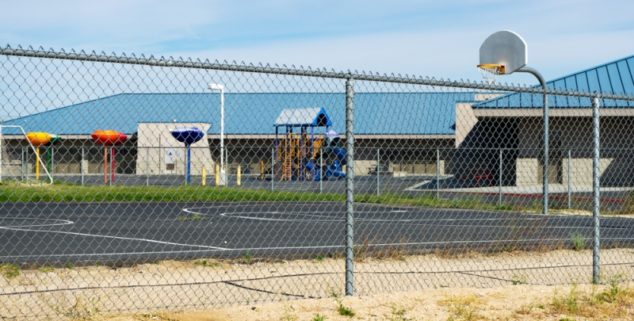Opinion
Reopen our schools, start COVID testing now
 A normally bustling playground in Victorville is devoid of students due to COVID-19. (Photo: Felipe Sanchez, via Shutterstock)
A normally bustling playground in Victorville is devoid of students due to COVID-19. (Photo: Felipe Sanchez, via Shutterstock)We have spent the past 10 months talking about how to reopen schools. Now is the time to take action. There are less than four months left in the current school year and we should not let the final bell ring before getting kids back into their classrooms.
Of course, we cannot and should not sacrifice school, teacher or student safety in doing so. And we don’t have to because we have all the necessary tools to reopen campuses sooner rather than later. Testing, along with safety and hygiene protocols, is the key to unlocking our schools.
California has received nearly 12 million of these tests, which perform nearly on par with “gold standard” PCR tests and provide results in 15 minutes rather than the several-day PCR turnaround times.
While vaccinating the vast majority of our population will take many months, consistent, rapid, testing programs can help schools immediately identify and isolate outbreaks to safely bring students back to campus.
Early on, the high price and long turnaround times for COVID-19 testing made weekly or twice weekly testing impractical. But the testing landscape has evolved, giving us more options that are cheaper, faster, and — when performed and interpreted correctly — just as accurate and reliable as lab-based tests.
The federal government pre-purchased 150 million rapid testing cards, with schools as a primary target for their use. To date, California has received nearly 12 million of these tests, which perform nearly on par with “gold standard” PCR tests and provide results in 15 minutes rather than the several-day PCR turnaround times.
Using these cards, schools could run a regular testing program for a few dollars per test – a significant reduction from the $100 PCR tests. Of course, a testing program does not work without a plan for a streamlined, organized and automated operation that can be launched in days, not weeks. Luckily, we can learn from successful testing programs run by a growing number of schools across the nation and in the state. With so few weeks left in the school year, running such programs is affordable and attainable.
The impact of distance learning is felt on the entire family unit. Parents and caregivers are falling behind at work.
The Newsom administration has made considerable headway in eliminating red tape and barriers for on-campus testing, which could allow districts across the state to initiate frequent testing programs to keep the school population and families safe.
There is little dispute that the status quo is failing our students.
Many students are falling behind and home-based learning has only deepened the divide for students in our underserved communities. For students in low-income and Internet-deprived households, the achievement gap is growing. This is unacceptable.
The impact of distance learning is felt on the entire family unit. Parents and caregivers are falling behind at work. Others cannot apply for jobs when they spend all day troubleshooting connectivity issues, teaching fractions, and tending to the emotional needs of children who have been isolated for the past 10 months.
With affordable, reliable testing options available and waiting for use, we need to take action now to implement full-scale, regular testing, with the proper safety precautions. Our children and parents are ready.
—
Editor’s Note: Andrew Kobylinski is CEO and co-founder of Primary.Health, a healthcare start-up that provides COVID-19 testing, vaccination and ancillary services to state agencies, educators, health care facilities, and community-based organizations at more than 560 sites in 13 states.
Want to see more stories like this? Sign up for The Roundup, the free daily newsletter about California politics from the editors of Capitol Weekly. Stay up to date on the news you need to know.
Sign up below, then look for a confirmation email in your inbox.

Leave a Reply